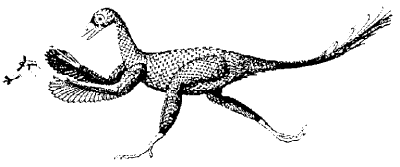 |
Science Frontiers ONLINE No. 44: Mar-Apr 1986 |
|
|
Tunnelling Towards Life In Outer Space
Most books on biology begin the history of life in those apochryphal warm ponds of primordial soup. Leave comfortable earth for a moment and consider the immense, cold clouds of gas and dust swirling between the stars and galaxies. At near-absolute-zero, sunless and waterless, these clouds hardly seem the womb of life. Yet, there may be found the atoms necessary to life -- H, C, O, N, etc -- and in profusion. Collisions of cosmic rays can promote the synthesis of fairly large molecules. We have already detected molecules as complex as formaldehyde in the interstellar medium. But surely the immensely more complicated molecules of biology cannot be synthesized near absolute zero. This may not be true either because at extremely low temperatures the quantum mechanical phenomenon of "tunnelling" becomes important.
To achieve molecular synthesis, repulsive barriers must be overcome. The warm temperatures in that terrestrial pond can provide the extra kinetic energy to climb over these barriers. In cold molecular clouds we must look elsewhere. The laws of quantum mechanics state that there is always a very low probability that atoms and molecules can tunnel through repulsive barriers -- no need to climb over them via thermal effects. "Specifically, entire atoms can tunnel through barriers represented by the repulsive forces of other atoms and form complex molecules even though the atoms do not have the energy required by classical chemistry to overcome the repulsion." Of course, the reaction rates are slow, but the size of the cosmic pond is vastly greater than any terrestrial puddle.
The above quotation is from V.I. Goldanskii who, even before Hoyle, suggested a cold prehistory of life, during which complex organic molecules were synthesized at just a few degrees above absolute zero. His article dwells primarily on the physics of the tunnelling phenomenon, which is well verified in the laboratory, but he does not shrink from the biological implications.
(Goldanskii, Vitalii I.; "Quantum Chemical Reactions in the Deep Cold," Scientific American, 254:46, February 1986.)
Comment. In the first few paragraphs you can almost hear the theme music from the movie 2001.
 | Evolutionists sometimes get carried away in inventing protobirds. This specimin was developing feathers on its forelimbs to help catch insects. The illustration comes from Evolution: A Theory in Crisis, by M. Denton. It is published in England, and we are trying to get copies. |